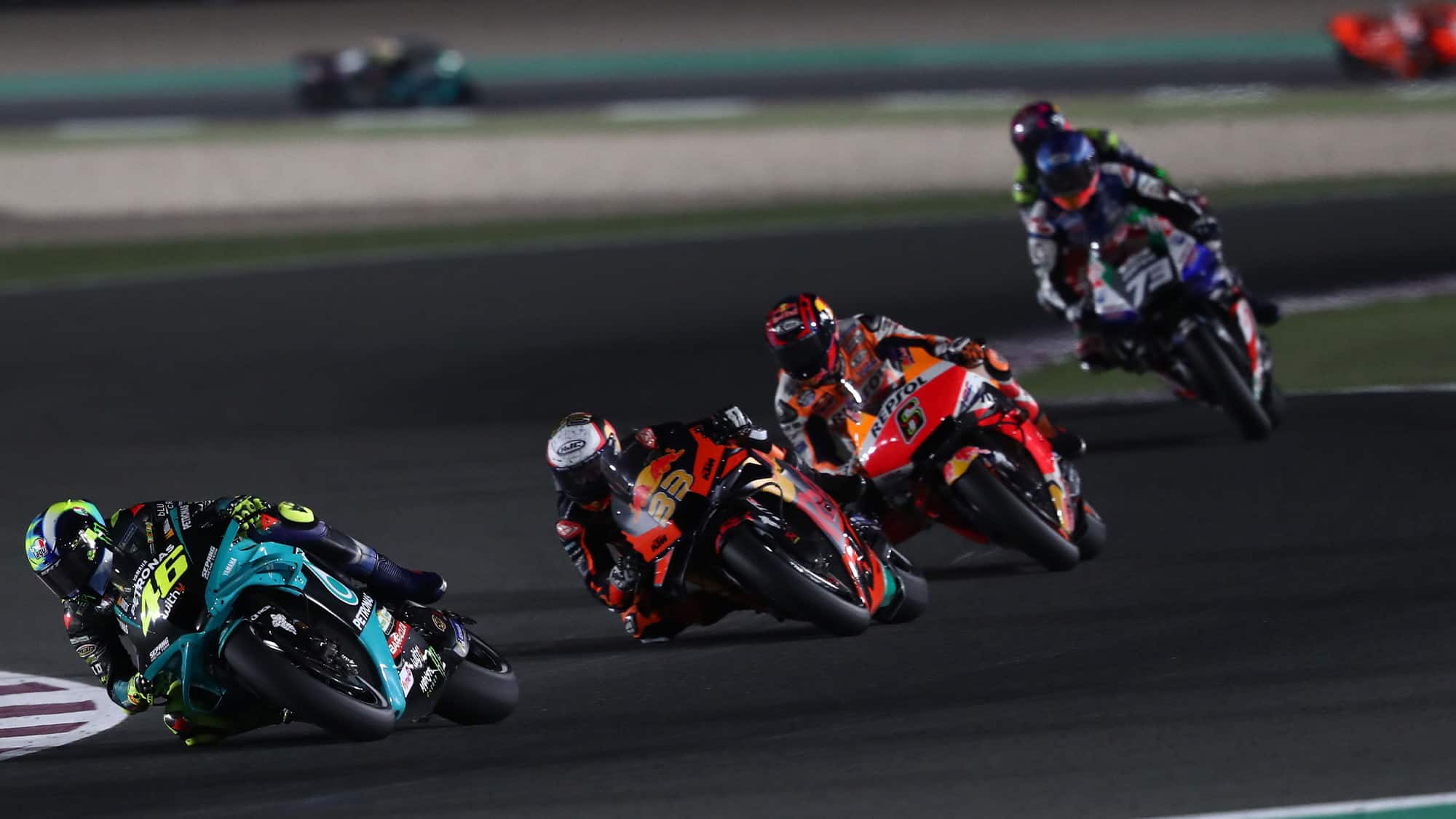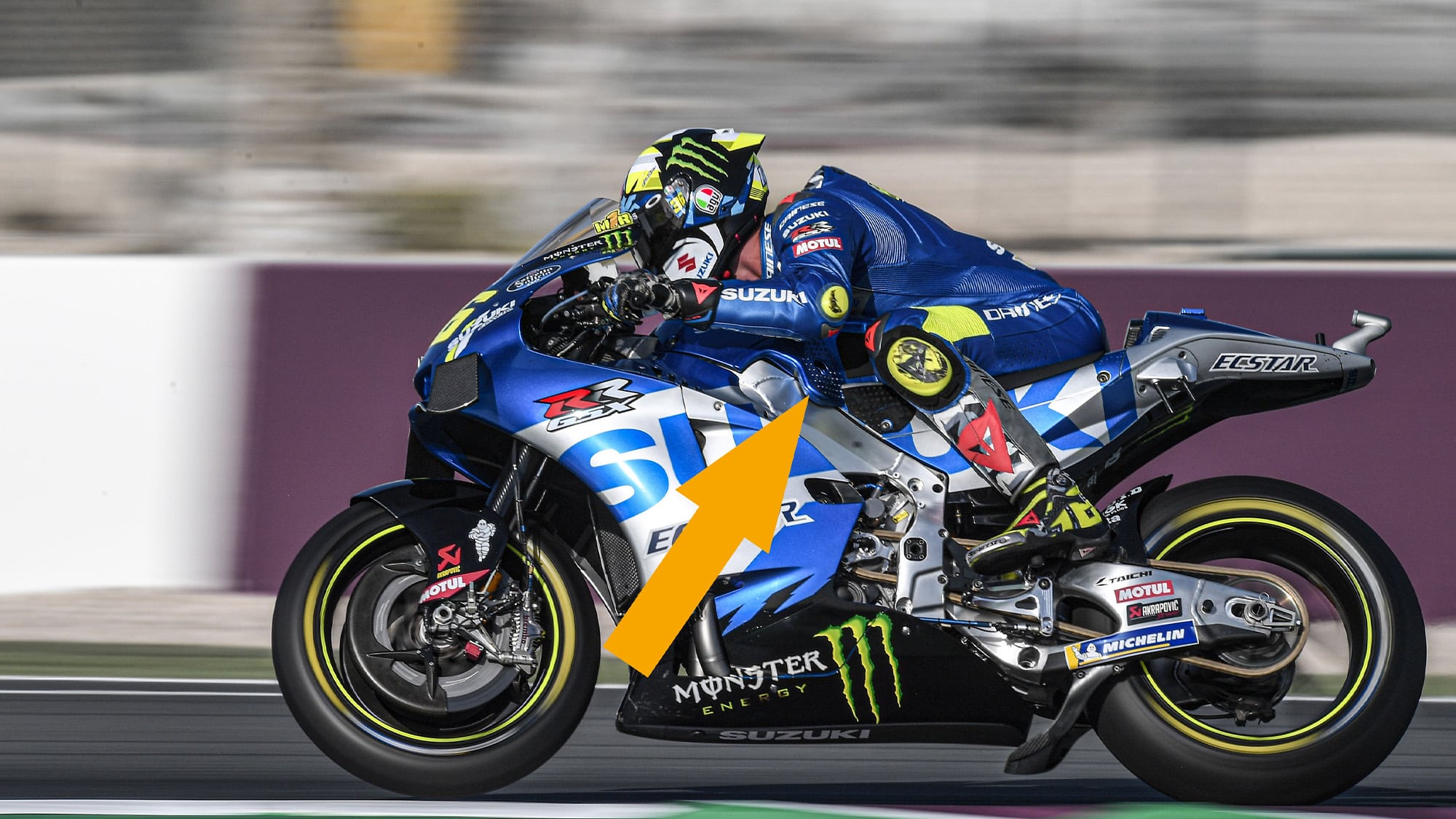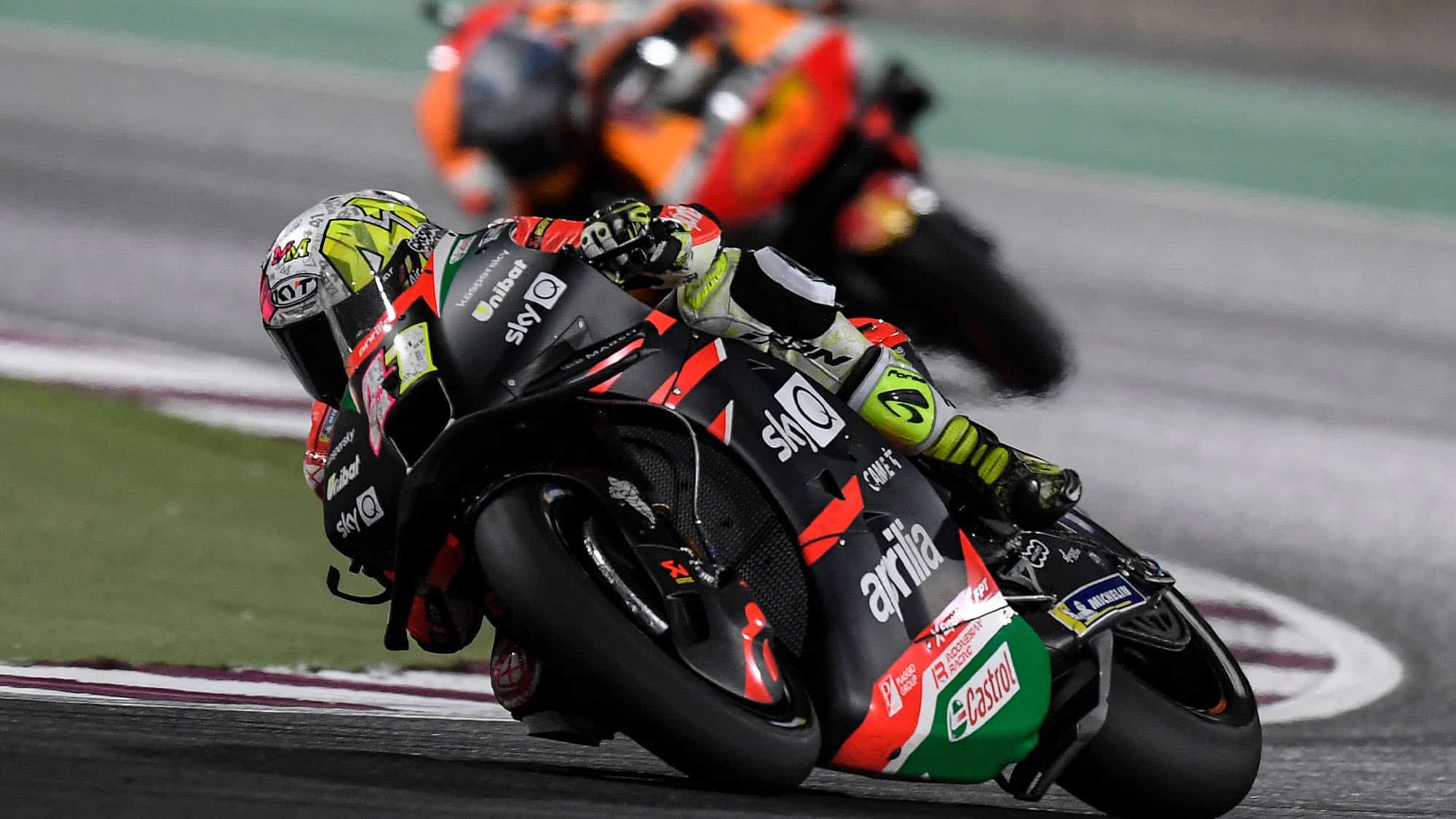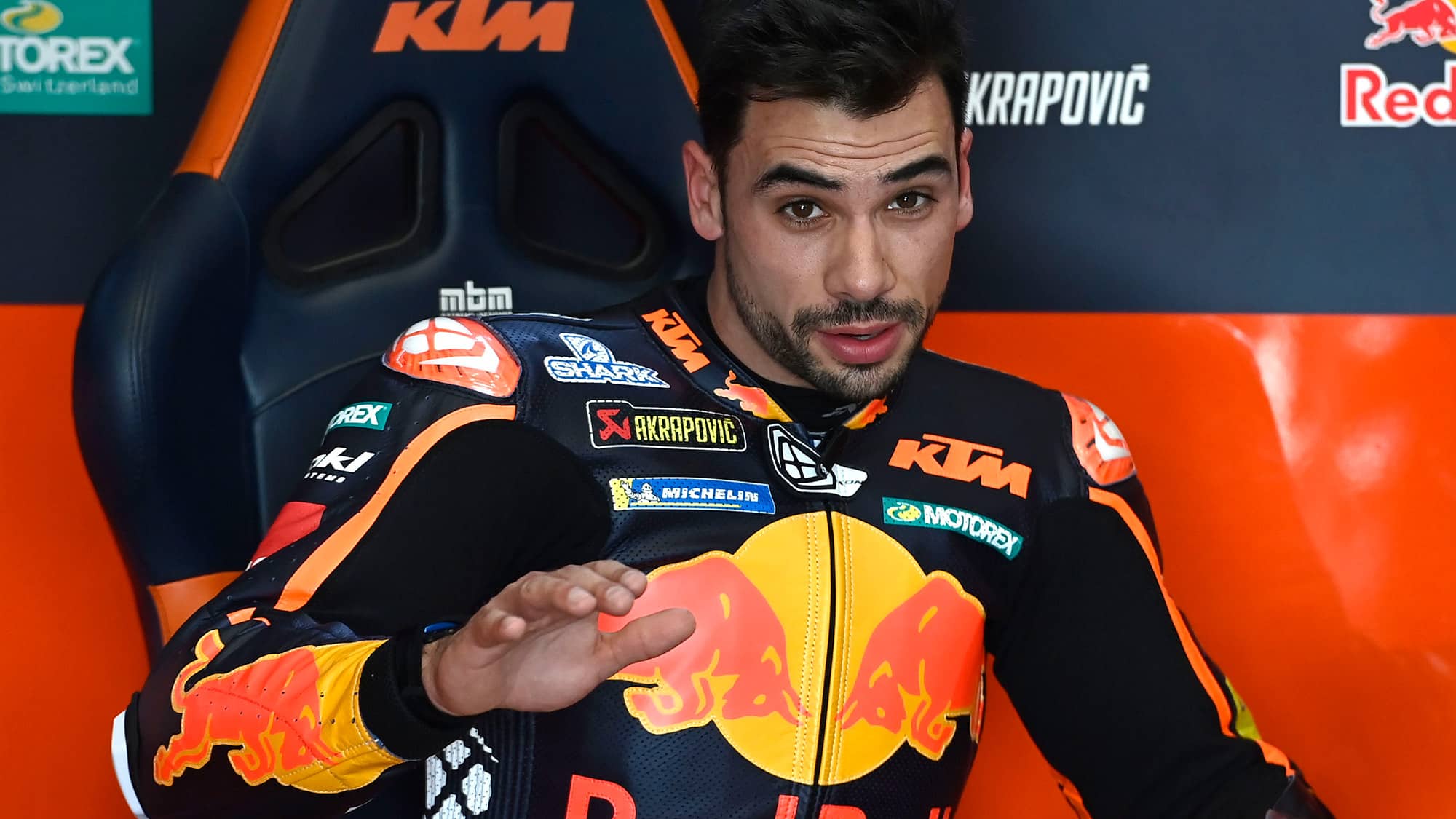Miguel Oliveira won two races on the RC16 last year, so he started 2021 as a title contender. No surprise then that by Sunday night – when he finished the race in 13th – he had had enough of the front-tyre situation.
“Unfortunately the line is so narrow between having the right tyre, the right temperature and getting our performance right,” said the 14-times GP winner. “It’s really disappointing because here we have to choose tyres by elimination, not by choice. It’s not our free choice to use the soft front, we use it because we cannot use any other tyre.
“The combination between the carcass and the rubber of the medium option is just wrong. We communicated this [to Michelin] from the first day we started testing here – nobody uses the medium. So we use the hard front when it’s hot [during daytime practice] and when we can use the hard we are competitive.
“We feel we should have different options available from the tyre manufacturer that actually work, especially after the many years that Michelin has been here. But quite the opposite is happening.
“We can’t spend six months developing a bike with a certain type of tyre and then have those tyres removed from the allocation. Our result from today isn’t a reflection of any kind of bike issue.”
Rossi: same old, same old

Rossi mid-pack, chased by Brad Binder, Stefan Bradl and Alex Márquez
Petronas SRT
Valentino Rossi’s impressive qualifying performance – a fraction of a second off the front row – wasn’t followed by a great race performance.
At the start of his 26th GP season and his first as a non-factory team rider since 1997 it was the same old story.
“In the race I struggled very much because after some laps the rear tyre started to lose performance and grip. For some reason I stress the tyre too much. In my long runs in practice I already had this feeling. We tried to do something but we couldn’t fix the problem. Maverick [Viñales] made a great race and him and Fabio [Quartararo] have something different in their settings, so it will be good to try to understand if we can improve for next week.”
Rossi has always preferred stiffer settings to his fellow M1 riders, which may explain why he over-stresses his tyres. However, in the past he’s tried running a softer bike, but without success. He needs to find half a second a lap, which is a lot.
Team-mate Franky Morbidelli had a nightmare start to the first season in which he is considered a MotoGP championship contender. His start device/shapeshifter – which drops the rear of the bike to improve the start and corner exits – auto-actuated and didn’t reset. He decided to keep riding and did amazingly well to finish 23 seconds down on the winner.
Some factory engineers think the time has come to ban start devices.
Mir’s thigh supports

Thigh supports help Mir hold his GSX-RR better during braking
Suzuki
Joan Mir contested the first race of his title defence with special thigh supports fitted to his Suzuki GSX-RR to help him during braking.
MotoGP bikes pull 1.7g on the brakes, enough to throw the rider over the front of the bike if he doesn’t hold on for dear life with everything he’s got: hands gripping the handlebars, boots dug into the footpegs, backside rammed into the seat and thighs gripping the fuel tank.
Mir won last year’s world championship despite being unable to grip the GSX-RR’s fuel tank because the bike is so slim, hence the new add-ons in Qatar.
“I like to really use the power of the legs in the braking area,” he explained. “I ride the bike a lot with my legs – I don’t ride so much with the upper body. If you look at the Suzuki’s fuel tank you will see the sides are completely flat, so when I brake my knees go forward and this is something I don’t like because it’s so uncomfortable. With these supports fitted the tank has a more normal shape, so this is a solution to work more with my legs.”
Team-mate Alex Rins doesn’t currently use the thigh supports.
Jorge Lorenzo used his own version of braking supports when he switched from the Yamaha to the Ducati and then the Honda.




